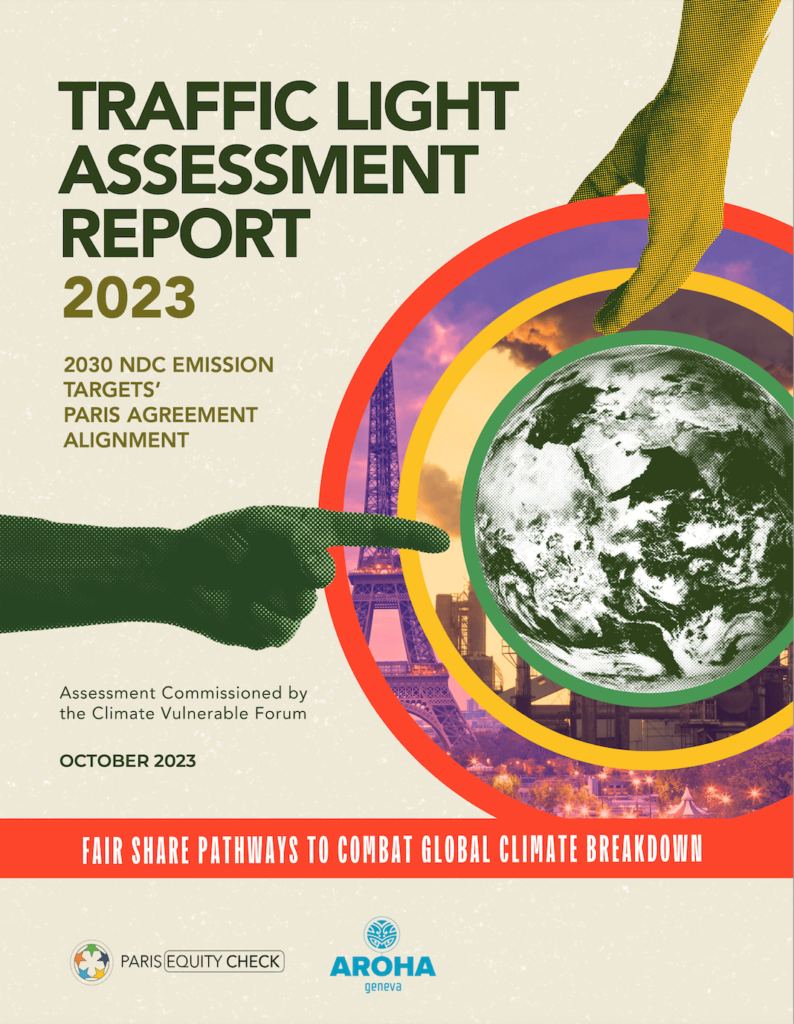Fair Share Pathways to Combat Global Climate Breakdown
The Traffic Light Assessment (TLA) evaluates the alignment of every country’s national emissions pledge, known as Nationally Determined Contributions (NDCs), for their compliance with the Paris Agreement (temperature goal and relating equity principles). This assessment is a quantitative interpretation of the equity principles according to one specific equity framework, which itself aims to capture core equity considerations of the extent to which different countries are doing their fair share to deliver the Paris Agreement’s temperature goal.
Key Findings
- The majority of countries that are a Party to the Paris Agreement are doing their fair share to deliver a 1.5°C world under it.
- The minority of countries that are not pledging their fair share to deliver the Paris Agreement are those responsible for most of the world’s climate pollution to date.
- Countries not pledging their fair share to deliver the Paris Agreement are overwhelmingly the world’s wealthiest and highest capability nations (based on GDP/HDI), and include nearly all G7, G20 and developed countries.
- The poorest and most climate-vulnerable countries of the world are virtually all, individually and in the aggregate, doing their fair share to deliver the Paris Agreement’s temperature goal.
- Substantial increased near-term emissions reduction efforts are required from major developed and emerging economies, while for major developed economies like the G7 and the USA, carbon neutrality target dates should be advanced to between now and the early 2040s (country-depending), all of which may necessitate enhanced international cooperation to achieve.
- A single equity framework among many is presented here, most of the other frameworks share the same key variables, while adjustments to the TLA variables (for emissions responsibility between 1950 and 1990; or capability: shifting from GDP to HDI) imply marginal changes to key findings.
The results of the TLA are presented through the Online Web Tool and offers a map format with toggle parameters, enabling accessibility to explore the results for every country assessed worldwide, and to evaluate the alignment of all Paris Agreement parties’ 2030 NDC emission targets with the 1.5ºC goal. Explore the web tool here.
TLA grading categorization
The TLA “traffic light” system of categorization itself is determined by comparison of countries’ or groups of countries’ 2030 NDC emissions targets in relation to the dynamic fair share burden allocation for those countries/groups as established per the foregoing methodology. The boundary conditions for a ‘green’, ‘orange’ and ‘red’ light are established according to the parameters in the following table, which indicate the corresponding IPCC AR6 warming scenarios used to define each boundary.
Table: TLA Grading system boundary conditions
| TLA Grading | Category | Upper boundary | Projections |
| Green | Full compliance | Average of C1 & C2 scenarios | 1.5°C scenarios, with possible overshoot |
| Yellow | Near compliance | Average of C3 scenarios | Likely below 2°C |
| Red | Non-compliance | None, above C3 | 2° C and above |

